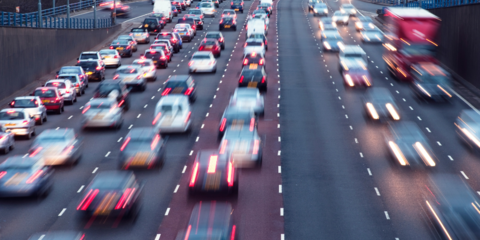
What Are The Rules On A Motorway?
Essential knowledge for new motorway drivers
If you’ve travelled for any distance across the UK, it’s likely you’ll have come across a motorway, and if you have, you’ll know that using them requires you to know a few extra rules. Currently, motorway driving is not part of driving tests in the UK, so you’ll need to brush up on your motorway rule knowledge if you’re heading onto one in the near future.
What is a motorway?
A motorway is a highway built specifically for travelling fast over a long distance. Compared to A roads and dual carriageways, they have few turn-offs, and usually comprise 3 or 4 lanes.
Some motorways in the UK have been converted into smart motorways, which involve using technology and variable speed limits to regulate the speed of traffic to improve its flow. As with any road, you should adhere to the signs when you’re travelling on a smart motorway.
Who is allowed to use a motorway?
It’s probably easier to tell you who isn’t allowed to use motorways. Those prohibited from using motorways are as follows:
-
Pedestrians
-
Cyclists
-
Horseriders
-
Drivers and motorcyclists with only provisional licences
-
Agricultural and slow-moving vehicles
-
Mobility scooters
-
Vehicles carrying oversized loads
-
Motorcycles under 50cc
What are the rules on a motorway?
In addition to adhering to the Highway Code and the laws in place on all of the UK’s other roads, those permitted to travel on a motorway must obey the following rules…
Entering a Motorway
Usually, you join a motorway via a slip road that allows you to merge into traffic from the left-hand side. All motorists should give priority to vehicles that are already travelling on the motorway, and therefore travelling at speed. You should use the slip road to accelerate, fitting the speed of the moving traffic to merge safely into the left-hand lane of the motorway.
There are some other rules to remember when you’re heading onto a motorway:
-
You should not use the hard shoulder to enter a motorway.
-
You must not cross any solid white lines that separate the lanes.
-
Stay on the slip road if it continues as an extra lane, manoeuvring only to overtake when safe to do so.
-
Check your mirrors earlier than you would do usually before changing lanes — traffic is travelling much faster on a motorway.
Driving on a Motorway
When you’re travelling via motorway are as follows:
-
You should constantly keep a distance of 2 seconds from the vehicle in front of you — this means that when the vehicle in front passes a stationary object at the side of the road, like a signpost, you should pass it at least 2 seconds later. Double this distance at the very least when conditions are wet, foggy or icy, as stopping distances will be increased.
-
The speed limit of 70mph applies on the motorway unless you’re told otherwise by signs, which could be at the side of the road, or overhead. Temporary or variable speed limits are put in place because of hazards, roadworks, or to help traffic flow smoothly.
-
You should never cross the central reservation
-
You should never drive against the flow of traffic
When can you use the middle lane on a motorway?
Middle lane hogging is a huge issue on motorways, and this term refers to motorists who travel for long periods of time, instead of only using it to overtake. The Highway Code states that ‘you should always drive in the left-hand lane when the road ahead is clear. If you are overtaking a number of slow-moving vehicles, you should return to the left-hand lane as soon as you are safely past.’
When can you stop on the motorway?
Stopping anywhere on a motorway is dangerous - there are a lot of vehicles on every motorway 24/7 — and they’re all travelling at speed. Therefore, you must not stop on any carriageway, slip road, central reservation, verge or hard shoulder unless there is an emergency. The only other exception is if you were to be asked to do so by a police or traffic officer, or by an emergency sign.
If you’re travelling on a motorway soon, you should plan ahead, including making a note of the junctions you need to take. Make sure that you leave yourself plenty of time, and remind yourself of the motorway rules before you go.
